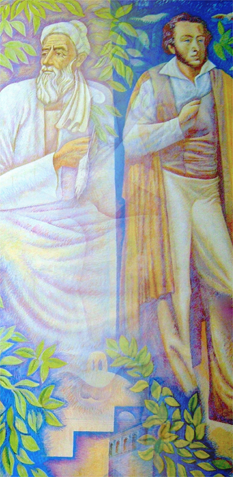
Cultural icons as means of national identity building in post-Soviet Central Asia and the Caucasus
The project ‘Cultural icons as means of national identity building in post-Soviet Central Asia and the Caucasus: Case of Tajikistan and Georgia’ is based on the materials related to the artistic genres, originating in Europe, like opera, ballet, cinema and 3D visual art, but which were brought to non-Russian countries that happened to be part of the Soviet Union during their Sovietisation and Russification. This process is characterised by the main mantra of Soviet identity building, coined by Stalin in 1931, based on the merging of two qualities: “national in shape, socialist in contents”. This was successfully achieved due to the scientifically identified cultural icons of national heritage, as reflected in traditional arts and their ‘recycling’ for the new ideology.
The two case studies of Tajikistan and Georgia have very different cultural backgrounds and contemporary milieux; however, they have a lot in common which permits a serious comparative analysis: their historically shared culture with Persia (in the case of Tajikistan - being considered a cradle of Iranian civilisation; in the case of Georgia - starting with the Safavid period, and especially during the Qajar era when Tiflis became the Russian capital in the Caucasus); their shared Sovietised and Russified cultural identity; and the difficulties of the de-Russification process during the post-Soviet period.
Field work to recover missing data related to the Georgian part is supported by a grant from the British Institute of Persian Studies.
